The event was officially called “Innovation, Justice and Globalization” but to the attendees at Harvard Law School last week, it was informally known as Jerryfest. Co-hosted by HLS professor and leading intellectual property scholar Ruth Okediji LL.M. ’91 S.J.D. ’96 and Justin Hughes ’86, the Hon. William Matthew Byrne, Jr. Chair at Loyola Law School, the two-day event held Sept. 26 and 27, celebrated the work of Duke University Professor J.H. Reichman by bringing economic and legal scholars to campus to discuss a variety of intellectual property issues.

William “Terry” W. Fisher ’82, the WilmerHale Professor of Intellectual Property Law at Harvard Law School, opened the first panel with an appreciation of Reichman’s work, in particular his work with patent law. This, he said, has helped to popularize a striving for balance: “Adjusting legal rules so as to maximize the benefits of intellectual property while minimizing its disadvantages. That this is now a cliché is in part testimony to Jerry’s influence.”
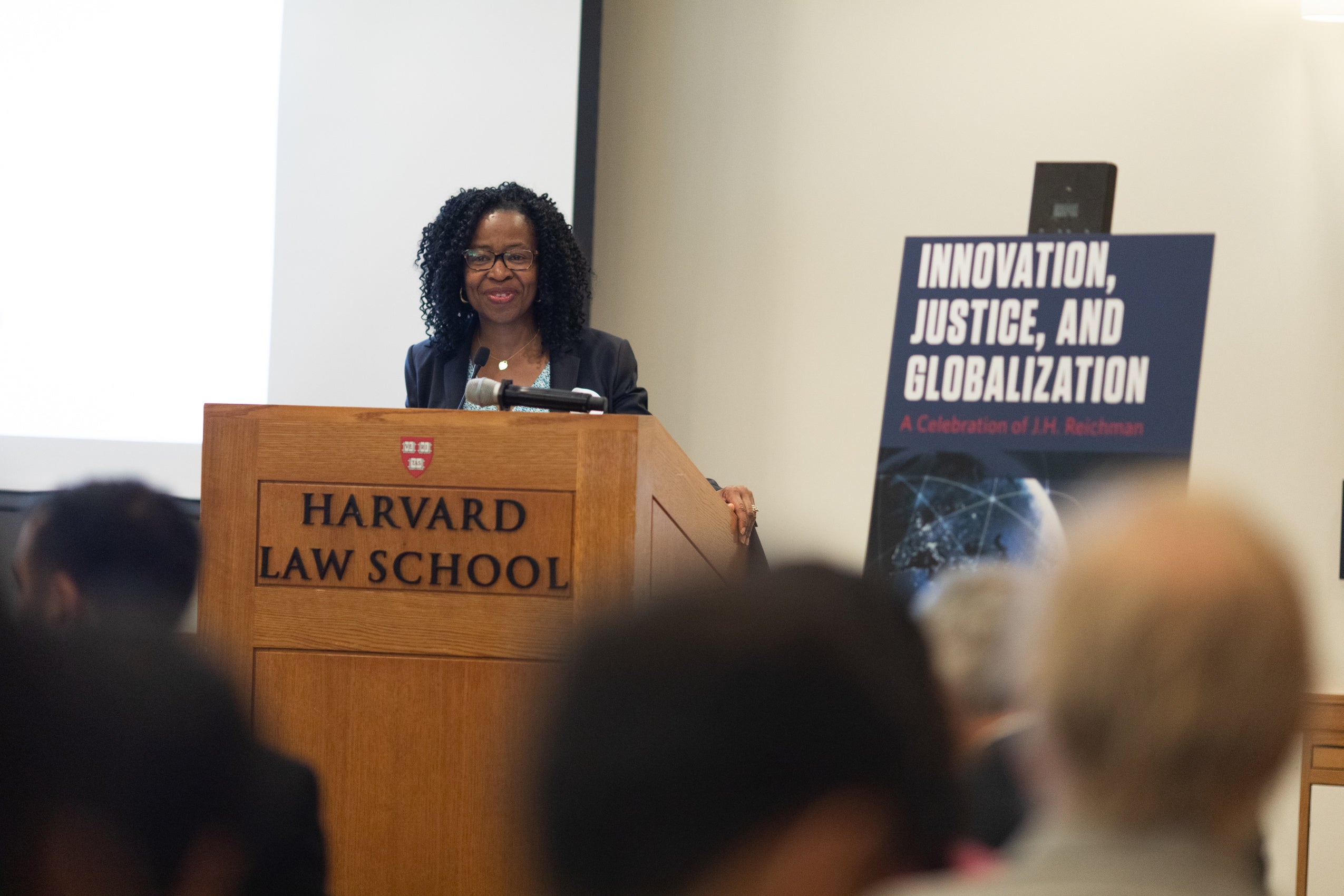
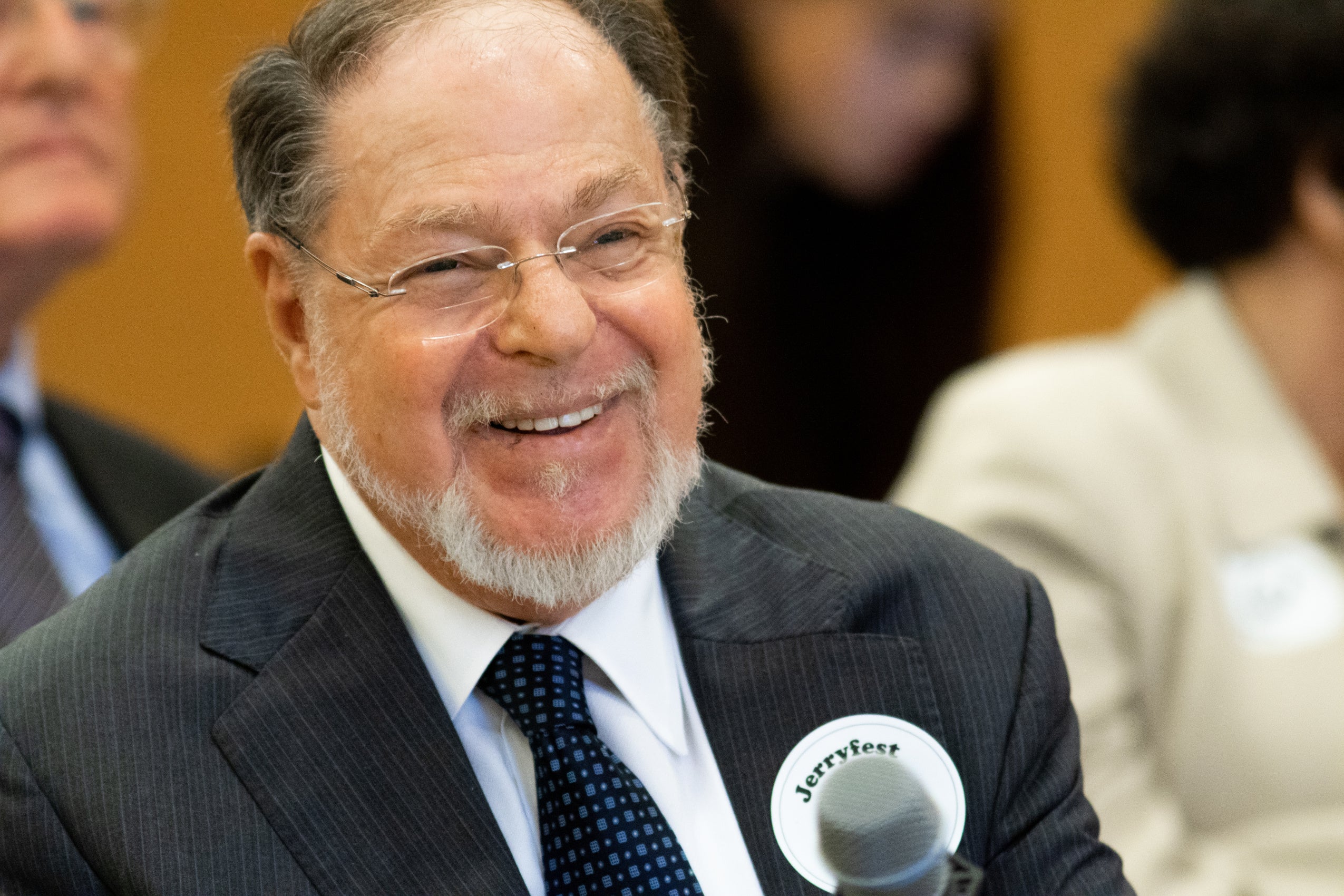
Patent law continued as a theme in the opening panel, “The Economics of Innovation and Development,” for which moderator Padmashree Gehl Sampath, a leading expert on trade policy, innovation policy, and economic development, invited the panel to “raise more questions than answers.” Carsten Fink, chief economist of the World Intellectual Property Organization, looked at the role of the patent system in fostering innovation. The effect, he said, is not standardized in different parts of the world. Citing a study done in Chile, he said that the acquisition of intellectual property rights didn’t necessarily make a difference in a firm’s subsequent performance. However, he said that trademarking and branding was shown in Chile and other parts of the world to have a greater effect on productivity than patenting. “Things need to be properly sequenced. If you don’t have the right financial mechanisms to support innovation, the best patent system in the world is not going to do anything for you.”
The morning’s panelists looked at the effect of the World Trade Organization’s TRIPS (Trade-Related Aspects of Intellectual Property Rights) agreement, which set standards for government regulation of intellectual property. According to Bhavan Sampat, this compelled many developing countries to change their patent laws, particularly in the case of pharmaceuticals. Some legal scholars and economists, he noted, were concerned about the impact this would have on innovation, as well as drug prices and the resulting world welfare. Studying the implementation of TRIPS in India, Sampat said that some of these concerns wound up unfounded. “Despite the expectations of just about everybody involved, drug patents in India had a negligible effect on drug prices and on generic competition.” However, there has been a rise in the issuing of primary patents, and drugs with those patents have a significantly higher price than their generic counterparts.
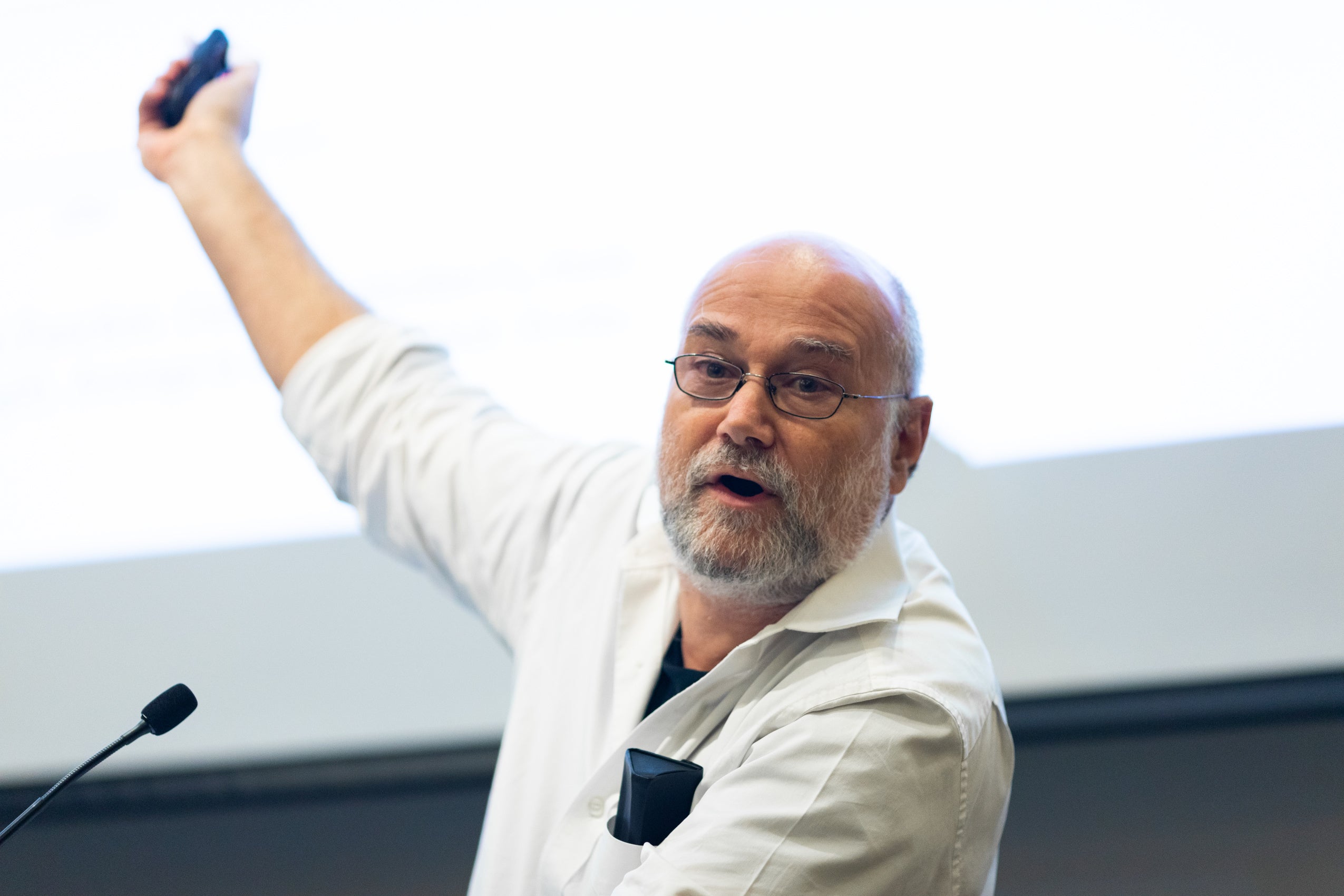
Harvard Business School Professor Josh Lerner looked at the complexities of the standardization process worldwide, concluding that “Standard setting bodies are interesting economic legal institutions. There is a lot more to understand about their processes, but there is also some real room for reform.”
“Technology is intentionally developed to resolve social conflict in favor of the party implementing the technology.”
Yochai Benkler
Former State Department Chief Economist Keith Maskus looked at the fairly recent phenomenon of incorporating intellectual property chapters in trade agreements. In one of the first studies on the topic, he asked whether these agreements have a notable effect on member countries’ trade flows. Citing a realm of data, what he found was a “sorting effect”: The agreements tend to diminish low IP exports (such as commodities and minerals) in all income groups, while having a positive export effect on high IP exports such as analytical instruments, biopharmaceuticals, and medical devices.
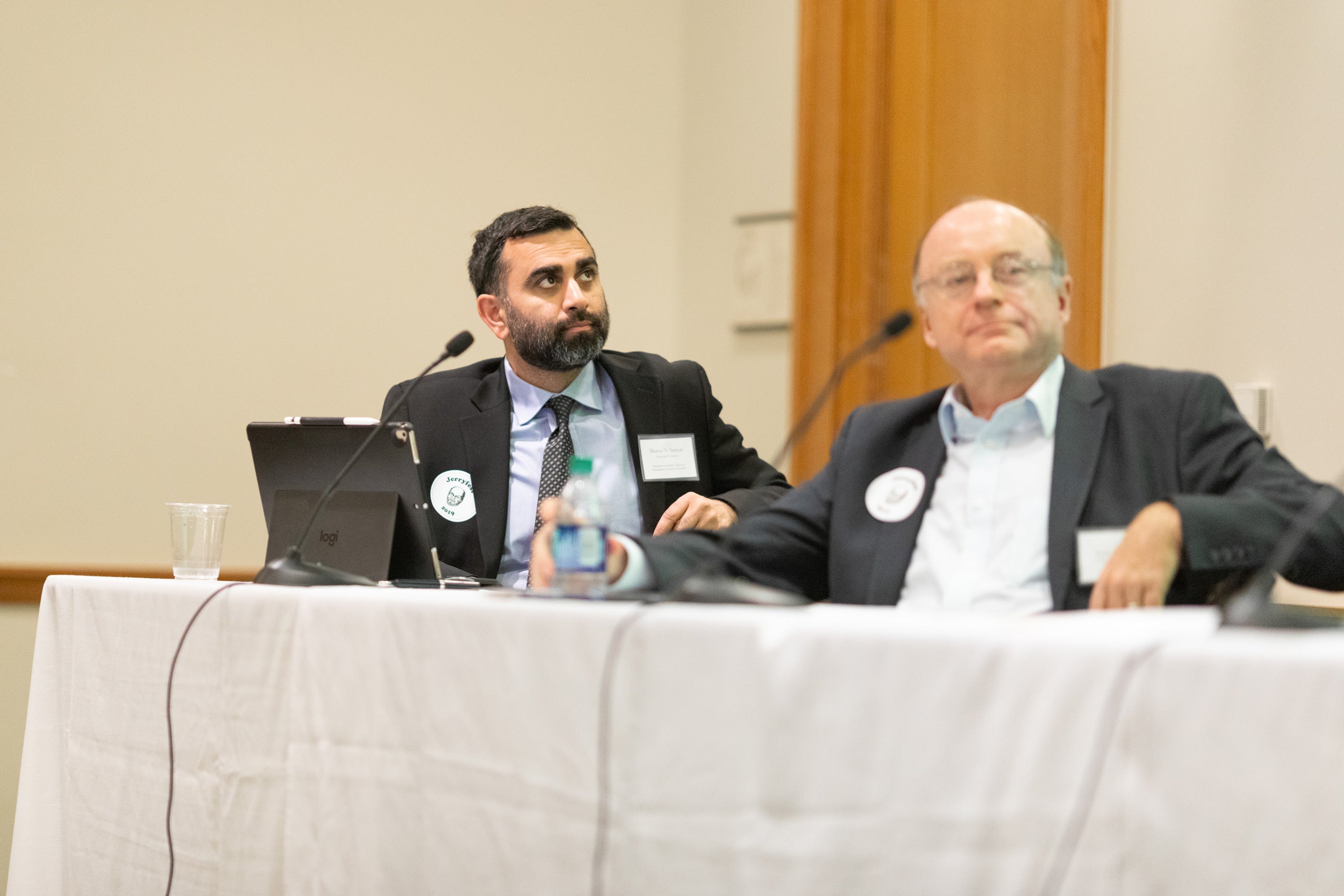
Harvard Law School Professor Yochai Benkler ’94, the Jack N. and Lillian R. Berkman Professor for Entrepreneurial Legal Studies at HLS, began his keynote speech by noting that much of what we assume about the relation between productivity and power is wrong. Common wisdom, he said, holds that steady population growth evinces a rise in overall welfare accompanying that of technology. Yet he said a number of factors prove otherwise—including slowed productivity growth since 1973, a decrease of employment by young firms since then, and a rise in the mortality rate of non-Hispanic whites, the only population in the civilized world that has seen longevity fall (largely due to suicide, alcoholism and addiction) since 1993. “Something is happening that is not consistent [with the idea] of technology moving things forward. A profound economic insecurity has led to dramatic rebellion against the elites that produce this narrative [of trickle-down], fundamentally disrupting democratic societies.”
Technology, he said, tends to reinforce inequality rather than remedy it. Citing research done by Helen Nissenbaum of Cornell Tech and HLS professor Larry Lessig, he said, “Technology is intentionally developed to resolve social conflict in favor of the party implementing the technology.” This can be seen in copyright battles over the last 25 years, battles over patents, and strategic lobbying over DRM (digital rights management) and the WIPO (World Intellectual Property Organization) treaty. “The experience suggests much more active, knowing strategic action, both by firms and by individuals, to shape the context that they understand will give them greater or lesser market power in the context of a market-based economy.”
With the weakening of labor and the rise of government deregulation, he said, firms now devote more resources to accumulating economic rents—the money earned from a resource in excess of its cost—and less to productivity. “Once unions are weakened, firms can dedicate more of their resources to the rent-seeking and rent-extraction side of the equation over the productivity. Unsurprisingly in that context, that larger pie is put in the pockets of the very few who can control this system while leaving in economic insecurity, everyone else.”
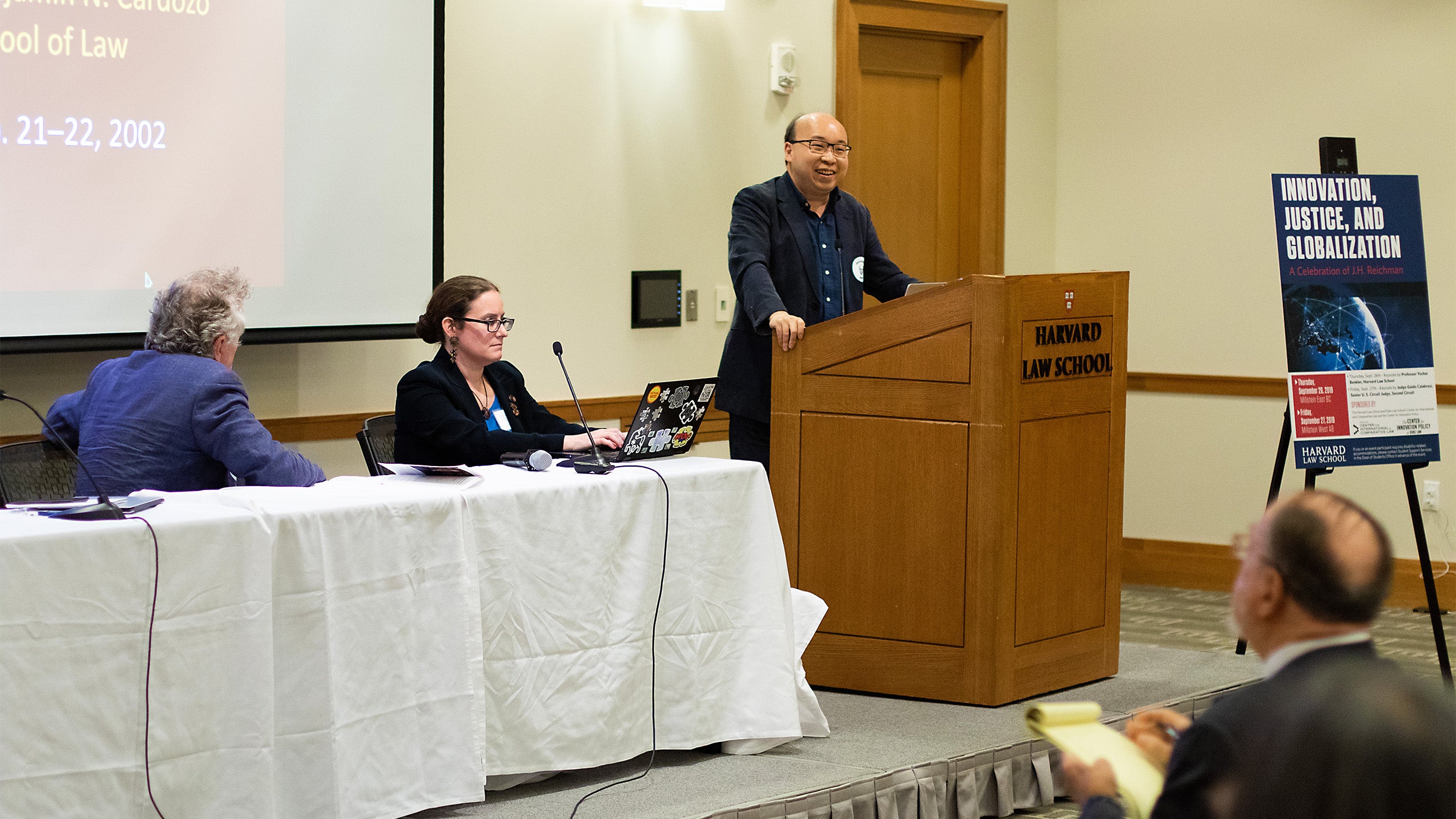
The afternoon’s panel, moderated by Professor Rebecca Tushnet, the Frank Stanton Professor of the First Amendment at HLS, brought Viagra into the discussion, along with other drugs recognizable by color and trademark.
Opening the panel titled “Do antitrust and competition law trust intellectual property law too much?” University of Leeds professor Graham Dutfield noted that the pharmaceutical industry has existed since the 1880’s, and that it has often hinged on branding and trademarks rather than patents. “Drugs both contain and conceal their special powers against disease. They need a texture or visual that describes their effect upon the body.” Hence Bayer aspirin’s cross-shaped logo stamped onto the pill, and Viagra and Prilosec’s respective blue and purple coloring. The colors and trademarks, Dutfield said, can have a placebo effect on drug users; something to consider in future legislation.

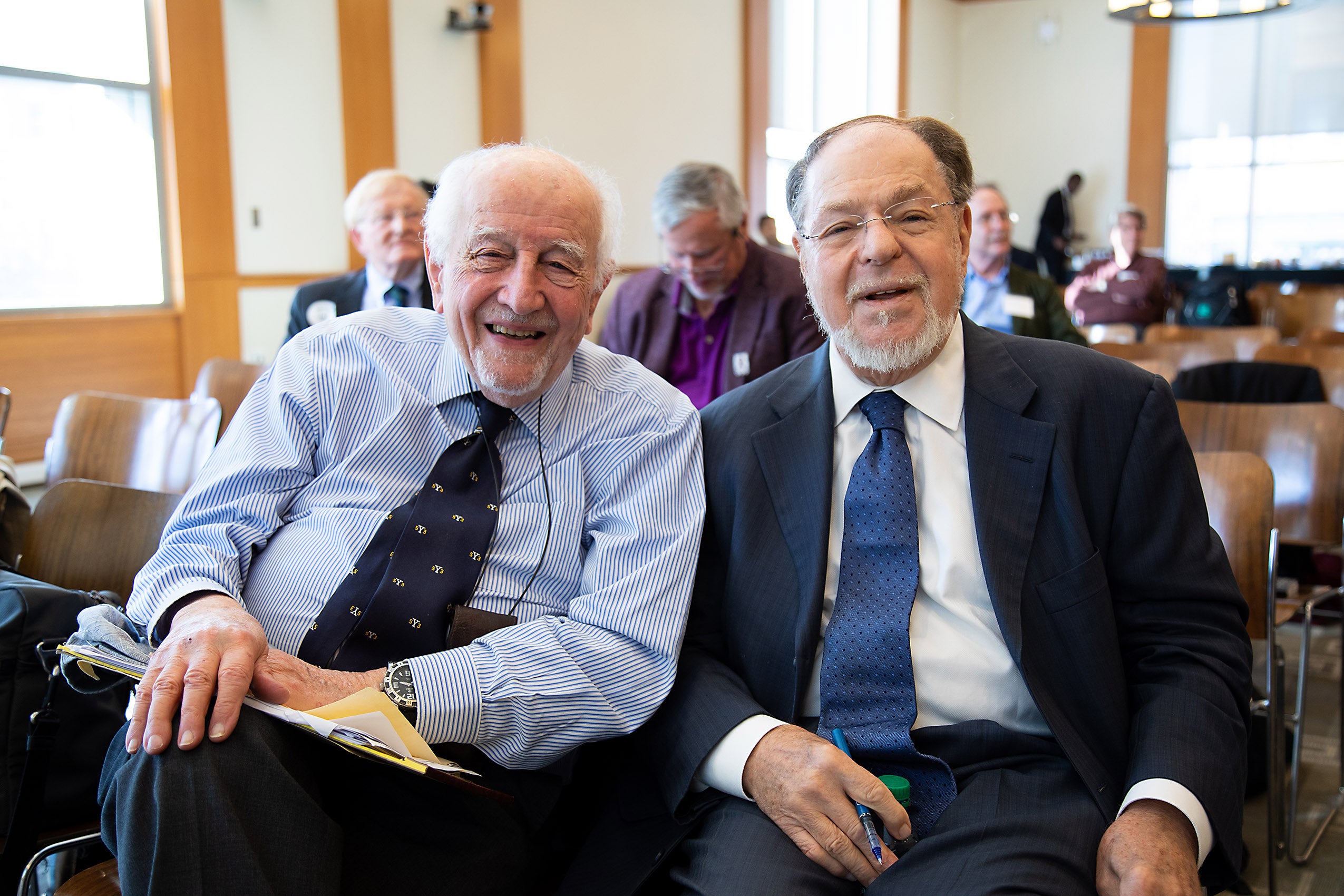
Sean Flynn ’99, a professor at American University Washington College of Law, recalled a key use of competition law to force the licensing of an intellectual property—specifically, AIDS drugs in South Africa. Unlike in America—where a company can turn higher profits by serving a larger part of the population—South Africa has a much smaller group of people making First World incomes. “That creates a profit maximizing incentive to just serve those highest-level people, and that’s why we had $10-12,000 prices for AIDS drugs everywhere in the world.” The Hazel Tau case (2002) remedied this exclusionary pricing through competition law; requiring that licensing be granted to companies making generic AIDS drugs.
The panel continued on Friday morning with a keynote by Judge Guido Calabresi of the United States Court of Appeals for the Second Circuit, titled “Liability Rules: What They Are and What They Are Not.”
